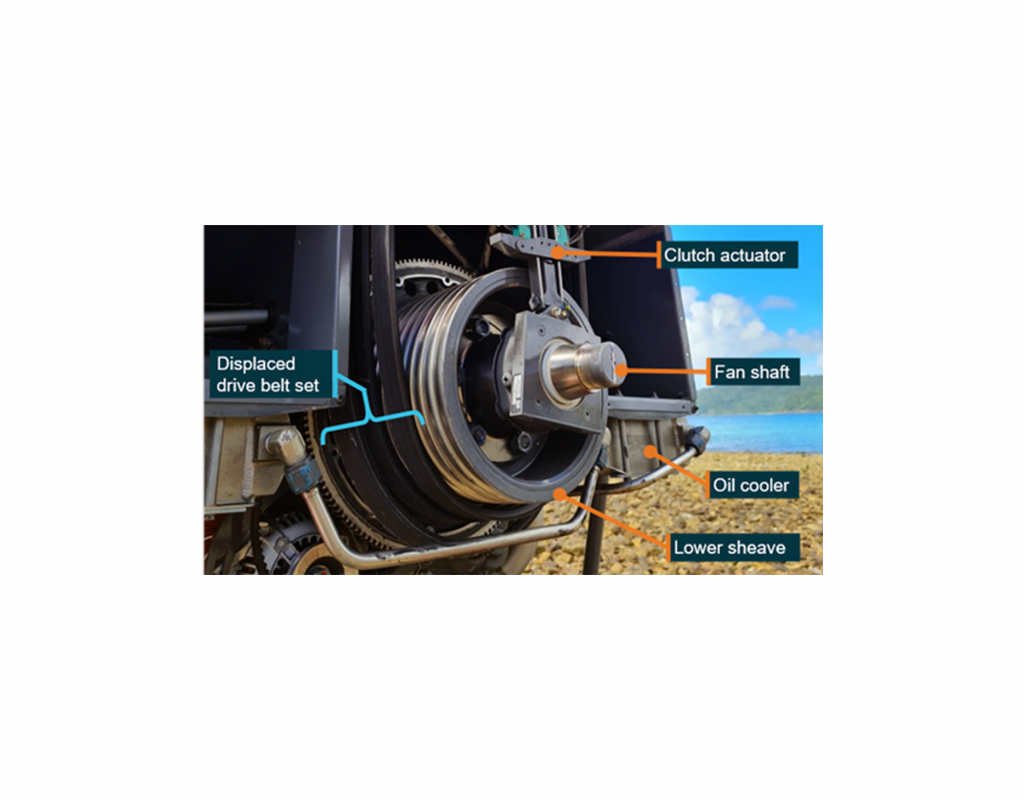
Robinson Helicopter Company has removed a drive belt stretching practice from its R22 and R44 helicopter handbooks in response to an ATSB investigation into a drive system failure and forced landing incident in Queensland’s Whitsundays region.
On Feb. 3, 2021, a Robinson R44 conducting a charter flight with a pilot and two passengers on board was cruising at 1,500 ft between Long Island and Hamilton Island when the pilot smelled burning rubber and saw the clutch warning light flicker briefly.
Shortly afterwards, and observing a reduction in main rotor RPM, the pilot turned the helicopter back toward Long Island and made a successful emergency autorotation landing on a beach.
A post-incident inspection found two of the helicopter’s four drive belts were dislodged and moved forward of the upper sheave of the helicopter’s drivetrain.
“The other two drive belts had also shifted forward such that they were not effectively engaged within their sheave grooves,” ATSB Director Transport Safety Stuart Macleod said.
“This meant there was a complete loss of effective drive from the engine to the rotor system.”
The ATSB’s investigation determined maintenance checks had found drive belt stretching both before and after the incident, each time within a short time of new drive belt sets being installed.
The report notes the helicopter maintainer, after installing new drive belts, used the then-recommended practice of extending the clutch actuator to stretch the new drive belt set.
“However, in light of this incident and other reports, Robinson has now identified that this practice may lead to overstretching and looseness in the drive belts during operation,” Mr Macleod said.
“Looseness can in turn result in the drive belts coming out of the sheave grooves while the helicopter is shut down, and disengaging drive to the rotor system in flight.”
Robinson has subsequently removed from its pilot’s operating handbooks for R22 and R44 helicopters the procedure of stretching new drive belts by extending the clutch actuator, and leaving it engaged with the engine off.
“Following the helicopter manufacturer’s latest advice, R22 and R44 operators and maintainers should not stretch new drive belt sets using the clutch actuator,” Mr Macleod summarised.
“This will avoid overstretching and reduce instances of drive belt disengagement and subsequent loss of rotor drive.”
Mr Macleod noted the pilot’s actions in quickly reacting to the loss of rotor drive led to the incident’s safe outcome.
“The pilot’s handling of this incident highlights the importance of efficiently managing an in-flight emergency by following flight manual emergency procedures, and having a pre-planned course of action,” he said.
“These fundamentals enabled the pilot to make a safe landing with no injuries or loss of the helicopter.”
Read the final report: AO-2021-007 Drive system failure and forced landing involving Robinson Helicopter Company R44 Clipper II, VH-SXC, 11 km west of Hamilton Island, Queensland on 3 February 2021
This press release was prepared and distributed by the ATSB.

